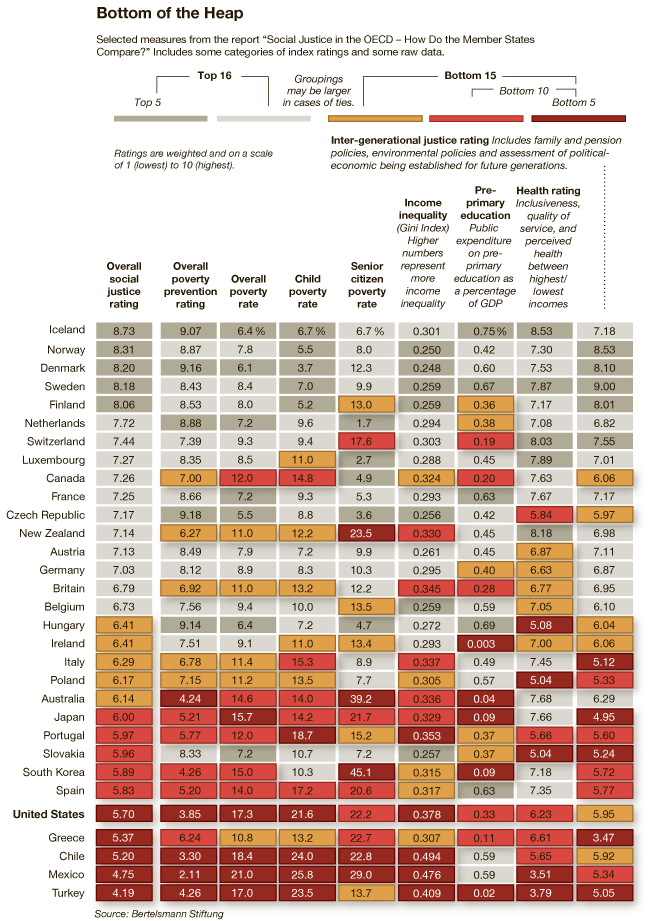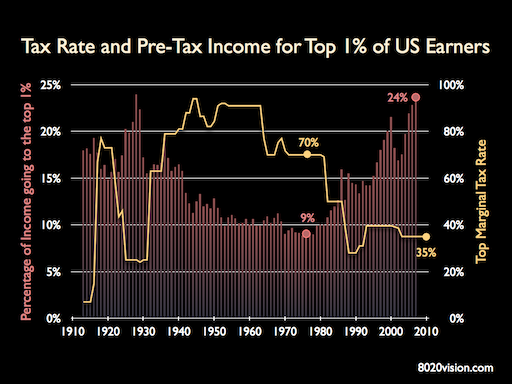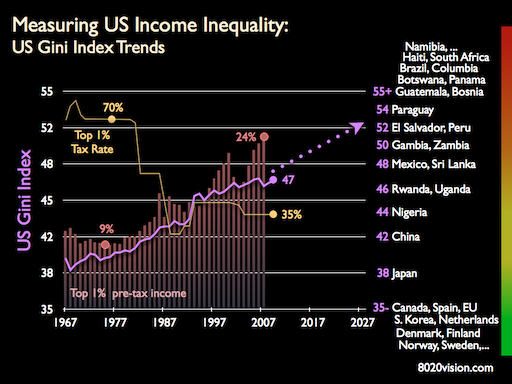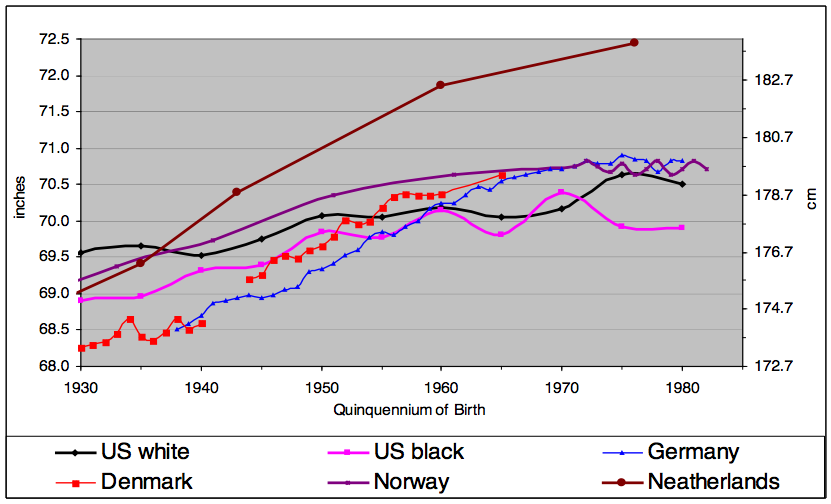I just got back from the TEDxRainier 2011 conference in Seattle. Curator Phil Klein and an extraordinary band of volunteers and professionals put together a fantastic thought-provoking day of guest speakers, thought-leaders, and visionaries. The theme for the conference was “Gained In Translation: Ideas Crossing Frontiers” – How do ideas spread in our modern, socially networked world? And how will we, the listeners, receive those ideas and translate them forward?
Singer/Songwriter Daria Musk offered up a live example of social media powered musical events. Using Google+, she introduced a selection of fans from around the world, projected on the ubiquitous TED presentation screen. Daria then kicked off her hit song You Move Me and proceeded to rock the house.
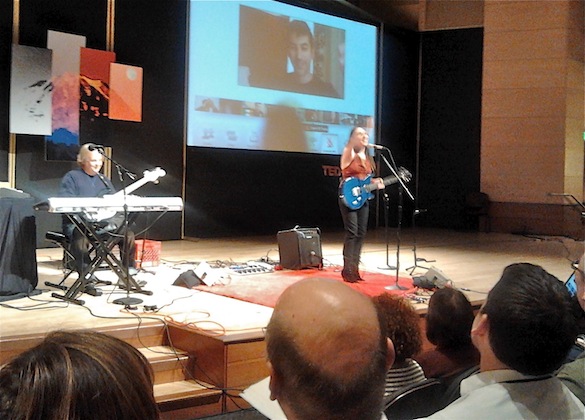
Using social media tools like Google+ and YouTube Live, Daria has performed live concerts to over 200,000 online fans. To put that in perspective, Wembley Stadium holds about 90,000 people. So Daria is rocking 2+ Wembley Stadiums, distributed throughout the world, all from the quiet of her studio.
Though I enjoyed most of the speakers, a few of the highlights included:
- Rick Steves‘ frank talk about how global travel brings us together, saying “Fear is for people that don’t get out much.” Rick is a world traveler and author of over 80 very readable helpful books on travel.
- Amory Lovins on Reinventing Fire – how to transition to zero carbon clean renewable energy by 2050. Commenting on political gridlock fostered by fossil fuel special interests, the best quote: “Not all the fossils are in the fuel.”
- Peter Blomquist on being humbled in his encounters with the kindness of simple traditional cultures. Peter is principal of Blomquist International, focused on organizational development, philanthropy, and global engagement. Best quote: Enter humbly, stay for tea, listen and learn.
- ITGirl librarian Chrystie Hill on how libraries are transforming and evolving in the new world. When kids were asked what they would like in a library where everything is allowed, one replied – “To hear the sounds of the forest as I approach the books about trees.” Chrystie’s presentation was very beautiful and inspiring. Librarians rock!
- Joe Justice, founder of WikiSpeed, describing the webspeed development of a revolutionary new electric car, using a distributed network of volunteer engineers, designers, manufacturing specialists, to develop the cars of the future.
- Leroy Hood on how insights from the human Genome project are bringing fundamental advances in early diagnosis and treatment of disease.
- Pediatrician Dimitri Christakis on how focusing on the first year of a childs development can have stunning effects on the potential of the child, for the rest of life. Dr. Christakis is author of The Elephant in the Living Room: Make Television Work for Your Children.
- Jenn Lim on happiness. Jenn Lim is the CEO and Chief Happiness Officer of Delivering Happiness, a company that she and Tony Hsieh (CEO of Zappos) co-created in 2010 to inspire happiness in work, community and everyday life.
- Adnan Mahmud on “Climbing the ladder that matters.” Adnan tells his story about how he came to create Jolkona, a nonprofit that helps people raise large amounts of money through small donation, and receive proof of how the donations helped make a difference for those in need.
- The three Interfaith Amigos, Pastor Don McKenzie, Rabbi Ted Falcon, and Imam Jamal Rahman on religious discord, and how to get along. Their presentation received a standing ovation. It was at once funny and touching and brimming with promise and hope. The three Interfaith Amigos are authors of a new book – Religion Gone Astray.
For me, the most powerful talk was given by photographic artist Chris Jordan. Jordan, a former corporate lawyer, explores the detritus of mass culture, using photographs and images to, at a gut level, convey the impact we are having on the earth. I will post a video of his talk as soon as TEDxRanier posts it. For more on his work, see this link for some notes from a recent trip to University of Oregon’s Jordan Schnitzer Museum of Art in Eugene, OR.
While the presenters spoke, my wife Sue, author and artist at travelsketchwrite.com, sketched presenter core messages and ideas in a visual stream of consciousness. Here are her notes…
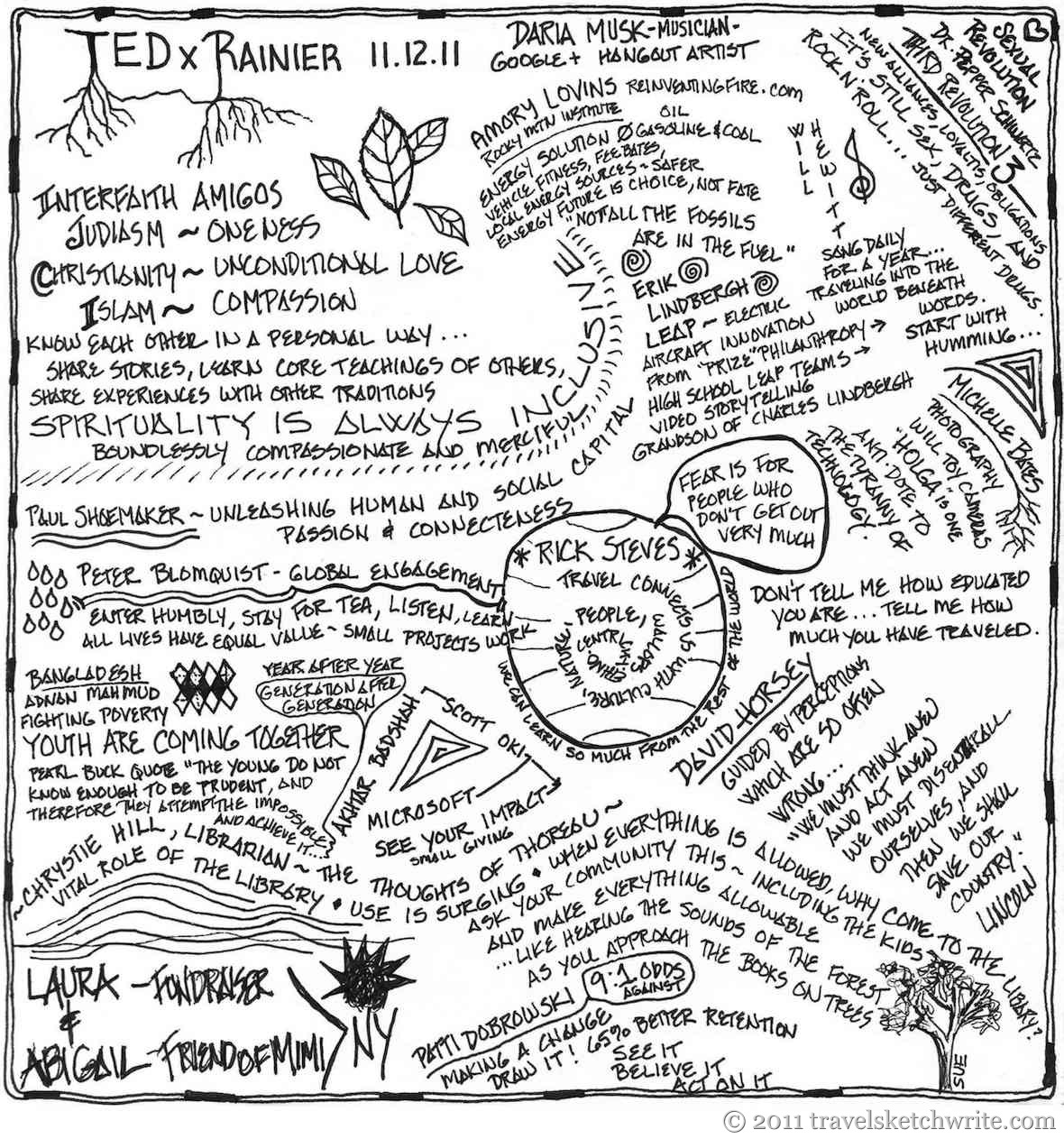

Looking for an idea for taking your sweetie out on a date? Go to a TED conference. Ideas are hot! Follow up the conference with a nice dinner, in a quiet romantic place, and prepare to have some great conversation. TED talks will inspire, enlighten, and fill you with hope.

